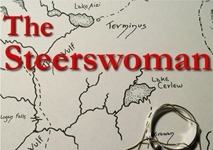Genre-spanning “pulp fiction” author Robert Ervin Howard was born this day, January 22nd, in 1906 in Peaster, Texas, moving in his adolescence to Cross Plains, where he lived until his suicide on June 11th, 1936, following his mother’s death. In those 30 years, he produced an immense amount of pulp fiction, practically defined at least one genre – sword and sorcery – and contributed masterpieces to several others. The Robert E. Howard legend is now imposing enough to rival even his hero Conan, and has spawned numerous books and at least one film in its own right, multiple-award-winning The Whole Wide World (1996). Not surprising, since Howard seems to have lived a life that did justice to any of his creations.
Gifted with a near-photographic memory and native talent, Howard started writing his first stories at age nine – mostly boys’ adventure tales. His jaded outlook on life and on civilization in particular, though, seems to have been formed in Cross Plains at age 14 when, in 1920, the town became an oil boom town. “I’ll say one thing about an oil boom; it will teach a kid that Life’s a pretty rotten thing as quick as anything I can think of,” Howard wrote to Weird Tales editor Farnsworth Wright a decade later. That and the fairly rough-edged native environment of Texas probably explains Howard’s later love of bodybuilding and boxing as much as any overcompensation by a wimpy kid. By 1924, aged 18, he had joined the stable of contributors to Weird Tales with stories of cavemen and werewolves – although he continued to work at times for the oil industry he detested. Two years later, he was hard at work on his first fantasy story with a barbarian protagonist, “The Shadow Kingdom,” which introduced Kull – another major Howard character – the serpent men of Valusia, and the whole cycle of imagined prehistory that would eventually mature into the Hyborean Age. Chronologies of the sword and sorcery genre often identify that story as one of its founding works, although the first Solomon Kane story, “Red Shadows,” with similar elements but a much more recent setting, arguably was the first S&S tale to appear in print in 1928.
Howard began the 1930s as a full-time writer, regularly producing boxing, sea, ghost, and historical adventure stories every bit as good as the fantasy and horror works he is known for. Red Sonja, actually a character from his 16th-century historical romance “The Shadow of the Vulture,” but spliced into the Conan canon by Marvel Comics, as well as Solomon Kane, are examples of how Howard’s various genre creations have fed into each other. In 1930 he began corresponding with fellow Weird Tales contributor H.P. Lovecraft, and the two exchanged the kind of ideas and inspirations that appear in 1932’s “Worms of the Earth,” which includes yet another barbarian hero, Bran Mak Morn, in a Roman setting resembling Lovecraft’s 1927 tale “The Very Old Folk,” evoking Lovecraftian or even Machenesque monsters. His own Conan cycle, though, began the same year, repurposing earlier Kull material, and resulted eventually in 21 original stories, 17 published in his lifetime, and some more fragments, synopses, poems, and essays.
Still writing weird and conventional Westerns, regular adventure tales, and other pulp stories, Howard by 1935 had mostly left Conan behind, soon after he began dating local schoolteacher Novalyne Price, one of the main sources on his later life. Speculation continues as to why he finally shot himself on his mother’s death, some identifying this as a mother complex, others believing that Howard simply waited to spare her grief before acting on his own depressive impulses and ending his own life. Whatever the reason, he was buried with his mother in a double funeral in Cross Plains.
Howard did more for a number of genres in thirty years than many far more overtly literary writers did over many decades longer, and his influence on popular culture has been huge. And if there is one Howard character that is larger than life than even Conan, it’s surely Howard himself.
Many of his works can be found for free on Project Gutenberg. And Project Gutenberg Australia and the University of Adelaide have even larger and better organized selections here and here.

































